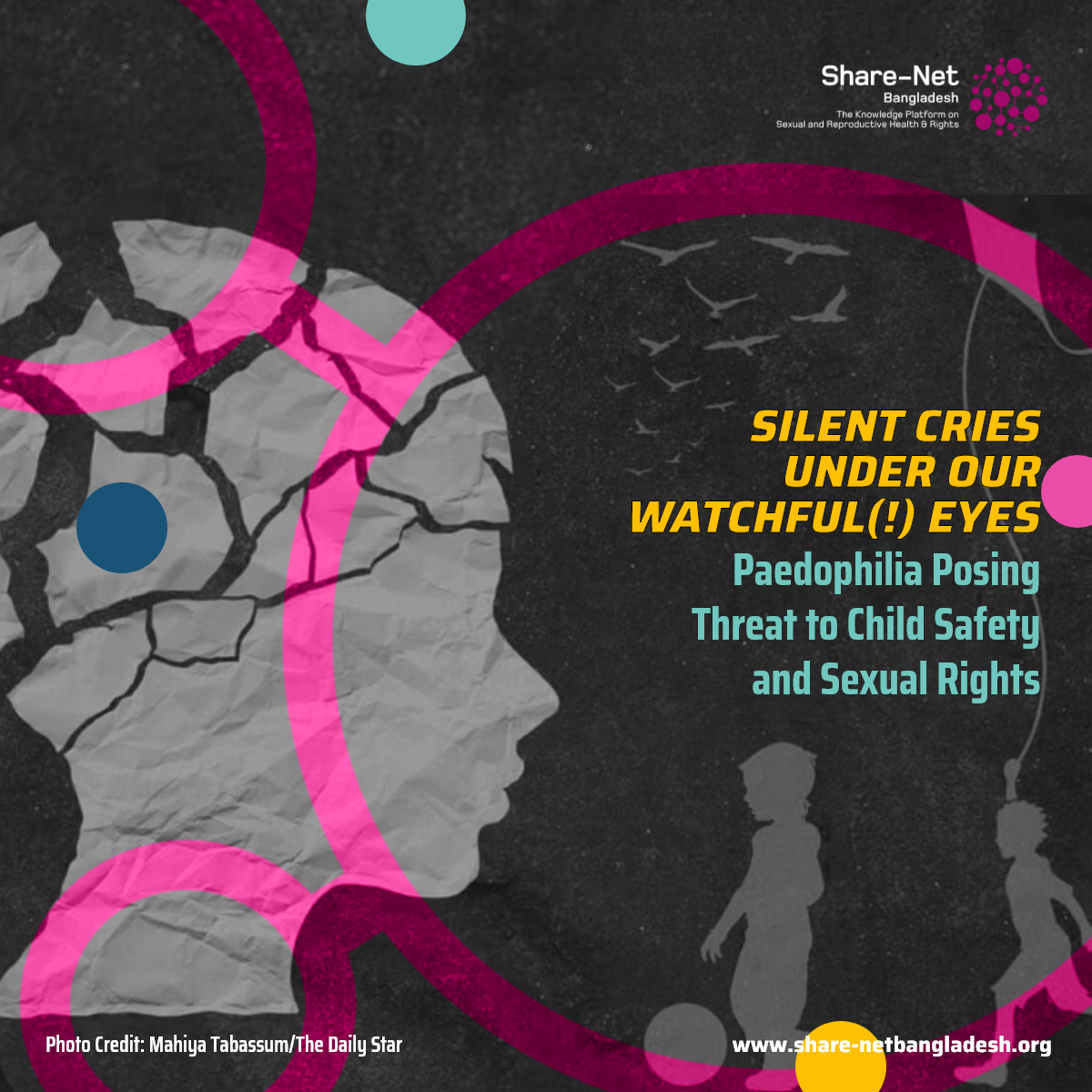Silent Cries Under Our Watchful(!) Eyes: Paedophilia Posing Threat to Child Safety and Sexual Rights
Do you remember the hauntingly beautiful film Ghetuputro Komola by Humayun Ahmed? Behind its lyrical storytelling and period drama aesthetics, the film carried a chilling undertone—a subtle but sharp portrayal of paedophilia deeply rooted in parts of Bengali culture. The story of a young boy dressed as a girl, exploited for entertainment and desire, wasn’t just fiction. It was a mirror to a cultural reality many refuse to confront.
And disturbingly, this pattern of abuse hasn’t disappeared with time. In fact, forms of child sexual exploitation persist even today, often cloaked in silence, sometimes within institutions like madrasas, where vulnerable children are left unheard and unprotected. Why does this continue? Why do we still hesitate to speak openly about a horror that is robbing children of their safety, dignity, and rights?
There’s no delicate way to say it: the children of Bangladesh are under threat, and society is failing to protect them.
In the first four months of 2025 alone, nearly 9 out of 10 rape cases in Bangladesh involved children, reports Ain o Salish Kendra. Some victims were as young as a few months old. Behind these statistics lies a chilling reality that few dare to name—paedophilia.
Paedophilia is more than an act of abuse. Medically, it is a psychiatric disorder marked by a persistent sexual attraction to prepubescent children. But experts insist: naming it a disorder doesn’t excuse it—it helps us understand it to stop it. “We are facing a threat we barely understand and one we’re too afraid to confront directly,” the report says.
Most people imagine abusers as strangers in the shadows. But in reality, they are often trusted individuals—relatives, teachers, or neighbours—making detection and justice harder. This silence and denial are what make paedophilia so dangerous in Bangladesh.
A 2019 New York Times investigation revealed how global paedophile networks trade abuse material online and coach each other on evading detection. With Bangladesh’s rising internet access and limited cybersecurity enforcement, experts fear the country is becoming a hotspot for such abuse, yet public discourse remains absent.
“Paedophilia must be included in our national policy conversations,” the report insists, “not just as a moral abomination but as a psychiatric threat that demands intervention.”
The issue is closely connected with sexual and reproductive health and rights (SRHR) and child gender-based violence (GBV) in Bangladesh. Without addressing paedophilia, any national effort to ensure SRHR and end GBV remains incomplete.
The country’s response so far has been surface-level. After mass protests in 2020, the death penalty for rape was introduced—but without judicial reform, it’s a temporary fix. Overloaded courts, poor investigations and a culture of shame ensure survivors are often retraumatised rather than protected.
Other countries are experimenting with bold solutions, like chemical castration or strict offender surveillance. Bangladesh, however, has yet to even begin national research on paedophilic behaviour or online grooming. This lack of data, the report notes, “is the result of a cultural shame that prefers ignorance over uncomfortable truths.”
To move forward, the report offers a blueprint:
-
Public education on grooming and abuse
-
Mental health services for early intervention
-
Legal reforms, including trained child-sensitive investigators
-
Research and data collection
-
And most crucially, listening to survivors
“Paedophilia is not a Western problem,” it warns. “It is here, it is real, and it is robbing our children of their safety, their sanity, and, in many cases, their lives.”
Bangladesh can no longer afford to look away.
Source: The Daily Star
Photo Credit: Mahiya Tabassum/The Daily Star


